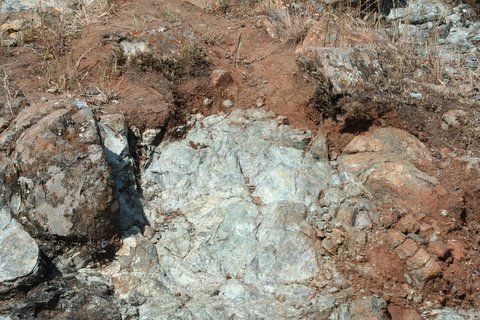|
Serpentine Soil Composition
|
|
|
The marble-like serpentine rock distinguished from its red serpentinite soil, found along the trial heading up Poly Mounatin
|
|
|
The soil which is derived from weathered serpentinite rock is called serpentine. It is the predominate soil found in Poly Canyon and elsewhere on Cal Poly land, which may be viewed in our Locations page. As a corollary to serpentinite rock, serpentine soil carries the unique chemical composition containing high amounts of magnesium and low amounts of calcium. The pH of the soil greatly varies, ranging from 6.1 (slightly acidic) to 8.8 (slightly basic). In many cases heavy metals, such as chromium, nickel, and iron, are present and give the soil its red color. Serpentine soil is typically a shallow and rocky, not suitable for retaining water. These conditions inhibit plants from developing deep roots, also making serpentine soils highly vulnerable to erosion. The abnormal chemical composition of serpentine also restricts the growth of normal plant habitats, instead supporting its own unique flora which have adapted over time; however, there remains to be low numbers of both species and individual plants which may survive on serpentine.
For more information, please see: Jones, Eric, J. “Relationships Between Soil and Plant Chemistry on Serpentine Soils.” April 1992. Cal Poly Senior Project.
|

